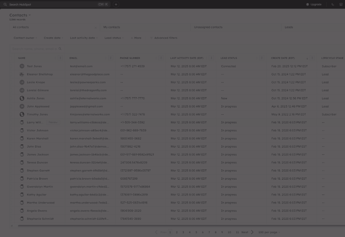When it comes to writing valuable content, expertise is essential. Getting your team experts to share what they know can be difficult or easy, depending on your team, but their insights can offer unique value to customers and make content worth reading. After all, why read the same five tips when you can have insights from an industry expert?
However, not all expert content is written in a way the audience can understand. Too much jargon and assumed knowledge can make your content unfriendly to a non-technical audience. How can you write great, value-packed content about your area of expertise without alienating the readers you want to be interested in it? It is a fine line that all expert content creators must face.
Turning Your Expertise Into Readable Content
There is a spectrum of legible notation in the technological world, from electricians to programmers. On the far end is engineer shorthand. These abbreviation-heavy notes can't be read by anyone but other engineers in the same specialization—and sometimes not even then. "For Dummies" guides and concept introductions are on the other end, written for complete beginners to understand basic concepts. The perfect balance of behind-the-curtains expertise and nontechnical hand-holding is in the middle.
Ideally, you want to reveal the depth of your knowledge without outpacing and confounding your audience. As such, your goal should be to give your audience the sense that they've gained some of your insider insight without feeling challenged by concepts that require industry knowledge or take more than a paragraph or two to understand.
Let's explore the keys to striking that balance.
Explain Everything
The key to explaining expert subjects to a nontechnical audience is to stop assuming knowledge. You may know that SEO stands for search engine optimization, but does your audience?
Acronyms are often the biggest problem. Jargon can make an audience feel like they are being brought inside the circle, but acronyms make nontechnical readers feel like outsiders. When you reference three random letters as if the reader already knows what they are, what they do, and how to use them, that's a big assumption.
Start by always spelling out your acronyms the first time you use them. This will also help you realize where in the flow of your content a concept needs a little more expansion. If a device, software, or protocol has a jargon name, explain it along the way. Don't assume that your audience already knows.
Use Bullet Lists and Tables
Give your readers something they can remember in a mental snapshot. Organize bite-sized information into bullet lists and charts. Summarize points, preview steps, and organize your thoughts under subheadings. Collected data makes it easier to understand, consume, and remember.
Bullet lists can be used to organize quick details. More intricate details can often be displayed well as a table or chart. If you find your information is more complex than bullets or a table can represent, upgrade to a diagram or an infographic.
Additionally, both an eye for page composition and a visual designer's help can enhance your ability to convey technical concepts to a non-technical audience.
Pretend You're Speaking to a Friend
The next step is to take a conversational tone. Some types of technical experts are far too used to writing professional documents. Research notes, academic papers, and technical reports can develop this arid and mechanical way of writing. This writing may make for good reports, but it doesn't make good copy for a blog, information center, or any other customer-facing information.
Other experts don't do much narrative writing, focusing more on developing their skills than explaining how it's done. This can lead to choppy, step-by-step content. Neither is great for your readers, but there's an easy fix.
Write as if you're explaining the idea to a friend. We are always more conversational, narrative, and plain-spoken when having a casual conversation. Imagine the audience as someone you respect but who doesn't have a technical background in your field.
Include Diagrams and Infographics
One of the best ways to help your audience understand a technical topic is to provide them with visuals. A clear diagram of the systems and concepts you're referencing can give context for technical terms and ideas. As you build an explanation, a chart helps your reader follow along, check where they are in a process, and create a complete understanding from a modular or step-by-step explanation.
Infographics can expand on ideas that are not easily contained in a diagram. Stages, separate facts, or guide tips can be summarized in an infographic, which is also helpful to visual learners who benefit from an image to pair with paragraphs of text.
Speaking to NonTechnical Professionals
Let's say you want to step it up a notch, speaking to professionals in your sector who might be nontechnical members of the field. In this case, shift your mental background to the breakroom or the conference-center floor. You're talking to someone who knows your business model and pain points but may not know the acronyms or specific tools.
A few touches of "you know what I mean" insider details add richness and engagement to the content, but keep these light and casual. For technical information and critical understanding, it's always worth adding a sentence or two to make yourself clear.
Is your content ready to communicate clearly with a nontechnical audience? Your nontechnical readers are often those clients and buyers who need your services the most. Contact us today for more insights on writing effective content for your audience.




